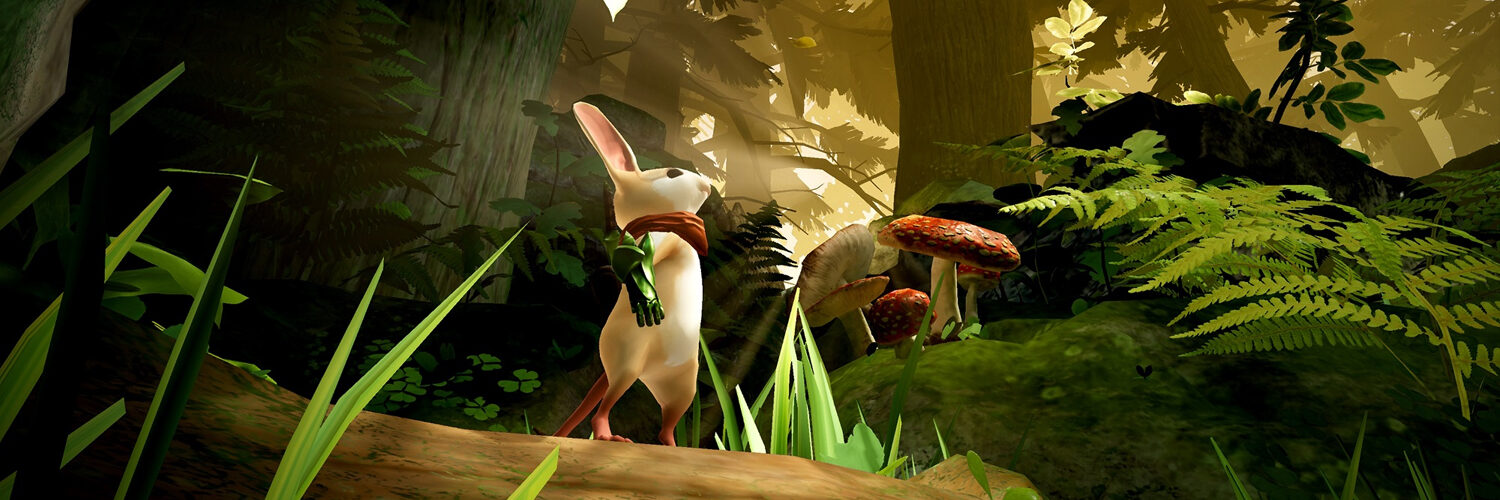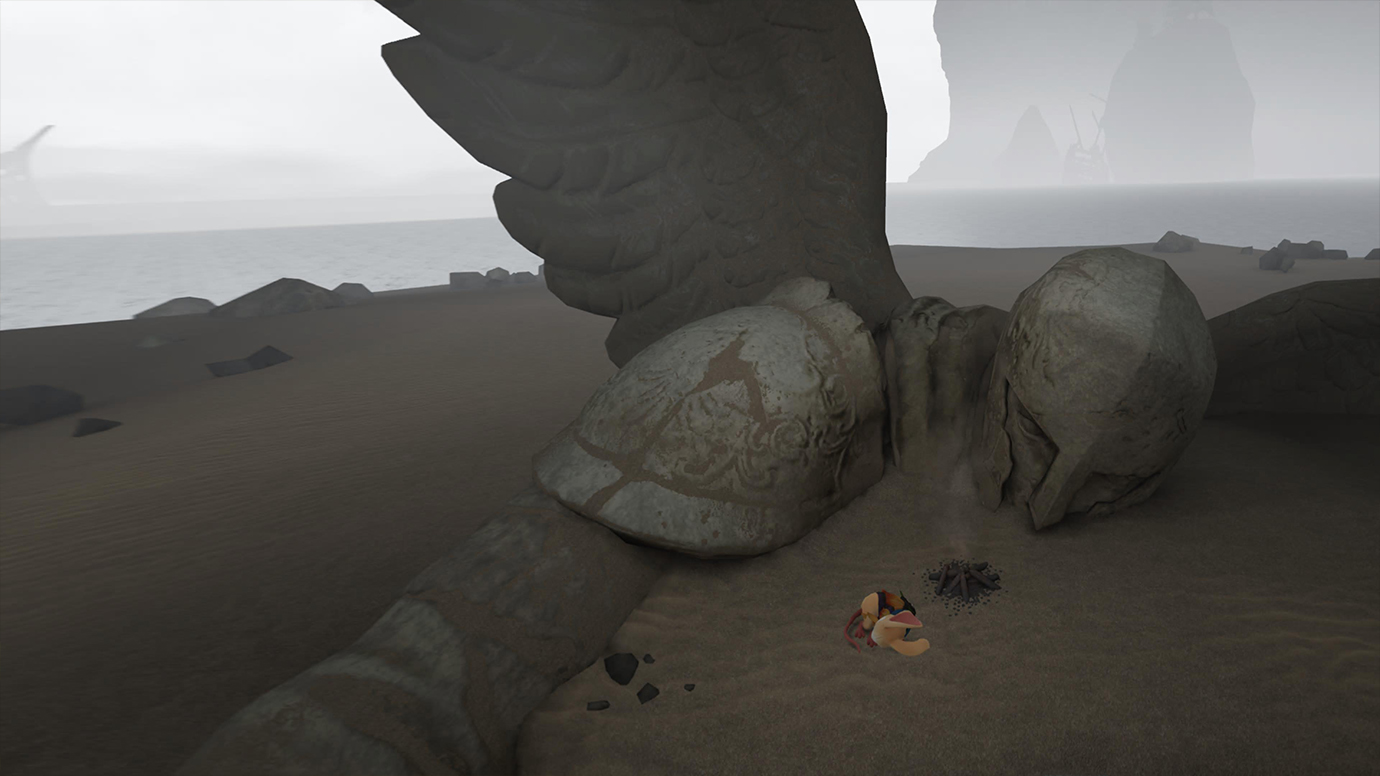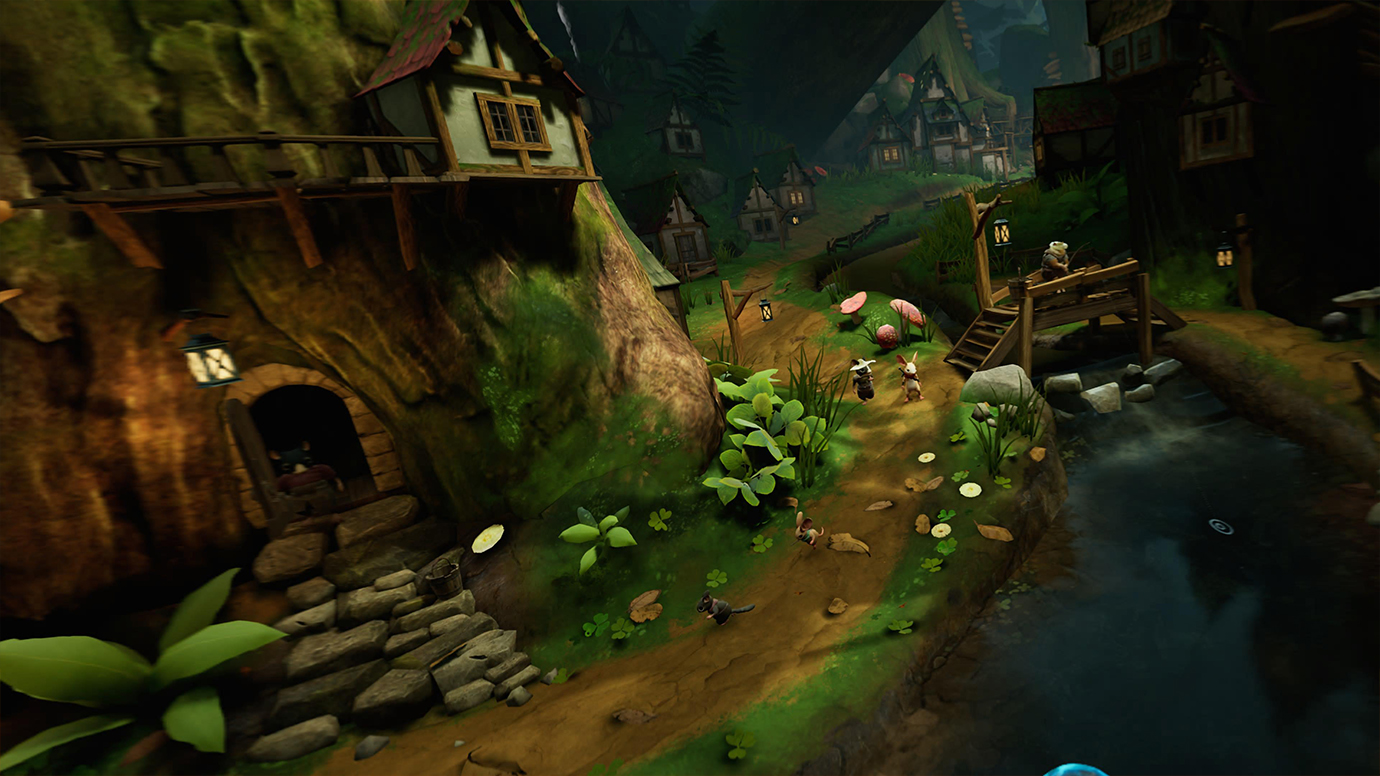
Moss PSVR2 Review
There are many pitfalls and hurdles that VR gaming need to overcome in order to reach a more widespread market, such as form factor (the dream of VR headsets being no more cumbersome than putting on a pair of glasses is still a long ways out), price and unique gameplay experiences only possible through VR. Of course, that last part is coupled with perhaps the biggest challenge of all: a unique gameplay experience that won’t also run the risk of causing discomfort, if not full-on nausea.

This is one of the many reasons why Polyarc’s debut title Moss is such a comfy experience; rather than toss a bunch of zombies, neon lights or other “cool 3D” tricks in order to wow the player (and potentially make them sick), Moss opts for a purely stationary viewpoint at all times, where players essentially are viewing diorama-inspired backdrops from a distance.
The other comfy aspect is the setting, which goes for a very familiar but also very specific world that resembles a children’s fantasy book (complete with literal VR page turning of said book between chapters), where humanity is wholly absent in favor of everyday woodland creatures possessing swords, spells and speech. The most important, and most adorable, of all the woodland creatures is the adventure-seeking mouse Quill, who players take control of during the story, albeit in a more meta method (not as in “Metaverse”, that’s the other VR headset).
Though Quill can move, jump, attack and interact with the player’s controls, the context of the game’s narrative actually places them as an off-screen avatar known as “The Reader” (occasionally visible through reflective surfaces like water, looking like a friendly spirit from a Ghibli movie), who is tasked with assisting Quill with the interactive elements of the game. This mostly includes puzzle-based objects that impede Quill’s path, or can be used to create a new path like a makeshift platform, or to temporarily take possession of enemies, forcing them to stand on switches or shoot out-of-reach targets, including other enemies. Quill herself can also be healed from damage thanks to the healing touch provided by the Reader’s ever-present spirit hands. Anyone who has played a Wii game like Super Mario Galaxy should get the idea of how this works, though Moss creates a more symbolic link between player and protagonist that is more intimate than just a floating pointer: to Quill, the player is her partner, a silent observer helping her reach the end of her adventure, and though this kind of fourth-wall interaction has been done before to the point that it may feel trite, just try not to feel a sense of joy when Quill stretches out her tiny little mouse paw for a high-five, complete with a pleasing haptic jolt from the controller.

Speaking of the journey, the story of Moss is also a simple enough premise, but still fits nicely into that “comfy” moniker mentioned before. It is a particularly nice touch how the narrator has different voices for all the various characters in the game, and does a rather good acting job to boot; the kingdom of Moss (it is unclear if this is an intentional wordplay on the word “Mouse”, though it’s pronounced like the grass regardless) is under threat by the evil Sarffog, and on one stormy night Quill’s uncle sneaks off to face the evil threat alone. After a period of silence, Quill soon follows, young and amateurish but no less adventurous, as she sets off with sword in hand to finish the fight her family started.
Sounds familiar, doesn’t it? Though not as obvious an inspiration as the recent adventure game Tunic, Moss definitely borrows a page or two from the classic Zelda franchise, though the journey is a much more linear affair, with each screen serving as a stationary set that players must traverse, often looping around and above areas. Most of the viewpoint is easily viewable, though the game does encourage players to occasionally lean forward in order to get a closer look at Quill and the platforming perils standing in her way, though this isn’t mandatory; the game does a great job keeping the layout of each screen unique without blocking the player’s view of the progress.
But the charming VR visuals may prove incentive enough to get players to sit up from their chairs, from Quill’s adorable mouse-like animations as she scampers up tall ledges and fights off mechanical enemies, to the way most other animals and environments literally tower over both Quill and the player; if anyone is recalling the classic Don Bluth film The Secret of Nimh, they’re on the right track. This method of stationary diorama-inspired visuals are rarely seen in videogames, VR or otherwise, and the fact that more games aren’t taking advantage of fixed perspectives filled with intricate details is a real shame; imagine a new Final Fantasy game that harkened back to the pre-rendered backdrops of the PSX generation of games….now there’s a killer VR app that needs to happen.

Even so, Moss is a quaint and (once again) comfy experience in its own right. Besides the lack of any meaningful graphical or gameplay upgrades from the PSVR1 version (or worse yet, a cheaper upgrade alternative, as both this game and the sequel must be purchased separately without the ability to transfer progress), the only quibble is the simplistic combat, which is satisfying enough to control but suffers from a lack of moves and a bigger lack of enemies. The traversal and puzzle elements, however, are frequently kept fresh thanks to new power-ups obtained and new head-scratchers to solve as the journey continues…plus the storybook visuals combined with the unobtrusive VR effects combine into an experience that truly is a showcase game for the new PSVR2, one that guarantees most people of all ages can appreciate, rather than hurl.
